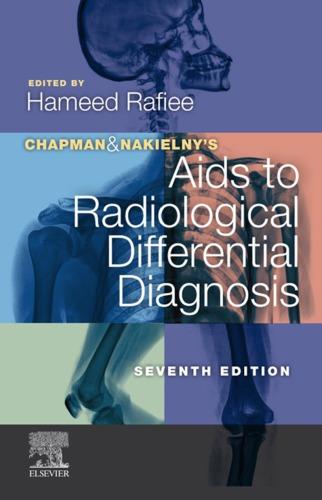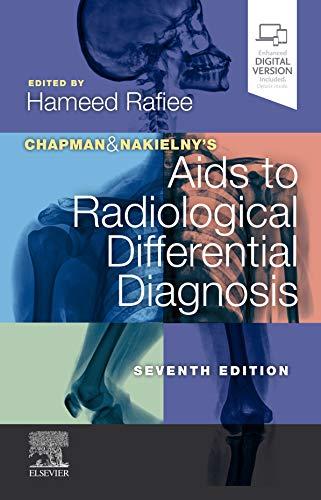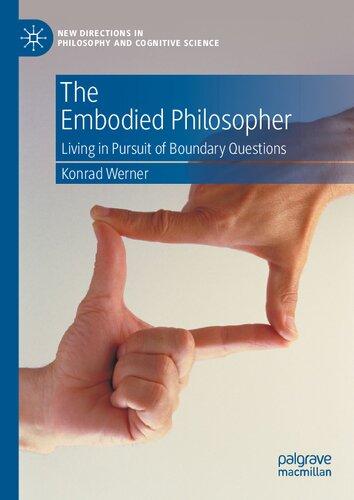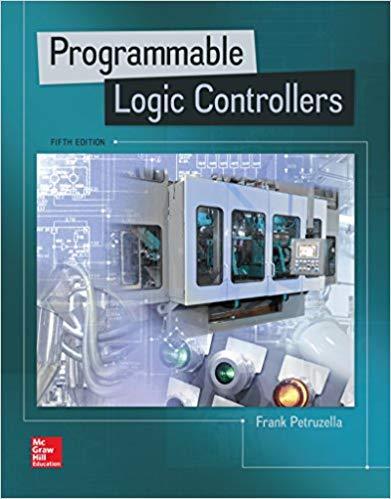Instant digital products (PDF, ePub, MOBI) ready for you
Download now and discover formats that fit your needs...
Chapman & Nakielny’s Aids to Radiological Differential Diagnosis 7th Edition Hameed Rafiee
https://ebookmass.com/product/chapman-nakielnys-aids-to-radiologicaldifferential-diagnosis-7th-edition-hameed-rafiee/
ebookmass.com
Chapman & Nakielny's Aids to Radiological Differential Diagnosis: Expert Consult - Online and Print 7th Edition Hameed Rafiee Mbbs Frcr (Editor)
https://ebookmass.com/product/chapman-nakielnys-aids-to-radiologicaldifferential-diagnosis-expert-consult-online-and-print-7th-editionhameed-rafiee-mbbs-frcr-editor/
ebookmass.com
A Medication Guide to Internal Medicine Tests and Procedures 1st Edition Gregory J. Hughes
https://ebookmass.com/product/a-medication-guide-to-internal-medicinetests-and-procedures-1st-edition-gregory-j-hughes/
ebookmass.com
Undone: A Forbidden Adopted Brother/Sister Romance (Dark Desires Book 4) Chelle Rose
https://ebookmass.com/product/undone-a-forbidden-adopted-brothersister-romance-dark-desires-book-4-chelle-rose/
ebookmass.com
The Embodied Philosopher: Living in Pursuit of Boundary Questions 1st Edition Konrad Werner
https://ebookmass.com/product/the-embodied-philosopher-living-inpursuit-of-boundary-questions-1st-edition-konrad-werner/
ebookmass.com
Messenger: An MM Romeo and Juliet Retelling (Star-Crossed Celestials Book 2) A.L. Morrow
https://ebookmass.com/product/messenger-an-mm-romeo-and-julietretelling-star-crossed-celestials-book-2-a-l-morrow/
ebookmass.com
Activities Manual for Programmable Logic Controllers 5th Edition Frank D. Petruzella
https://ebookmass.com/product/activities-manual-for-programmablelogic-controllers-5th-edition-frank-d-petruzella/
ebookmass.com
Status Anxiety: Hong Kong's Crisis of Identity 1st ed. Edition Bruce Voncannon
https://ebookmass.com/product/status-anxiety-hong-kongs-crisis-ofidentity-1st-ed-edition-bruce-voncannon/
ebookmass.com
An Inconvenient Duke Anna Harrington
https://ebookmass.com/product/an-inconvenient-duke-anna-harrington-3/
ebookmass.com
For Carole, Alexander and Liv For Richard and Emer
CHAPMAN & NAKIELNY’S
GUIDE TO RADIOLOGICAL PROCEDURES
Edited by
Nick
Watson
FRCP FRCR
Consultant Radiologist, University Hospitals of North Midlands, Stoke-on-Trent, UK
Hefin Jones FRCR
Consultant Radiologist, University Hospitals of North Midlands, Stoke-on-Trent, UK
SEVENTH EDITION
Edinburgh • London • New York • Oxford • Philadelphia • St Louis • Sydney 2018
© 2018 Elsevier Ltd. All rights reserved.
No part of this publication may be reproduced or transmitted in any form or by any means, electronic or mechanical, including photocopying, recording, or any information storage and retrieval system, without permission in writing from the publisher. Details on how to seek permission, further information about the publisher’s permissions policies and our arrangements with organizations such as the Copyright Clearance Center and the Copyright Licensing Agency, can be found at our website: www.elsevier.com/permissions.
This book and the individual contributions contained in it are protected under copyright by the publisher (other than as may be noted herein).
First edition 1981
Second edition 1986
Third edition 1993
Fourth edition 2001
Fifth edition 2009
Sixth edition 2014
Seventh edition 2018
ISBN 9780702071669
British Library Cataloguing in Publication Data
A catalogue record for this book is available from the British Library Library of Congress Cataloging in Publication Data
A catalog record for this book is available from the Library of Congress
Notices
Practitioners and researchers must always rely on their own experience and knowledge in evaluating and using any information, methods, compounds or experiments described herein. Because of rapid advances in the medical sciences, in particular, independent verification of diagnoses and drug dosages should be made. To the fullest extent of the law, no responsibility is assumed by Elsevier, authors, editors or contributors for any injury and/or damage to persons or property as a matter of products liability, negligence or otherwise, or from any use or operation of any methods, products, instructions, or ideas contained in the material herein.
Senior Content Strategist: Jeremy Bowes
Senior Content Development Specialist: Helen Leng
Publishing Service Manager: Deepthi Unni
Senior Project Manager: Beula Christopher
Designer: Brian Salisbury
Illustration Manager: Teresa McBryan
Illustrator: David Gardner and Antbits Ltd
1 General notes
David M. Rosewarne
Radiology 1
Radionuclide Imaging 9
Radiopharmaceuticals 9
Computed Tomography 11
Magnetic Resonance Imaging 13
Safety in Magnetic Resonance Imaging 14
Ultrasonography 19
2 Intravascular contrast media
David M. Rosewarne
Historical Development of Radiographic Agents 21
Adverse Effects of Intravenous Water-Soluble Contrast Media 25
Toxic Effects on Specific Organs 25
Idiosyncratic Reactions 28
Mechanisms of Idiosyncratic Contrast Medium Reactions 30
Prophylaxis of Adverse Contrast Medium Effects 30
Contrast Agents in Magnetic Resonance Imaging 33
Historical Development 33
Mechanism of Action 33
Gadolinium 34
Gastrointestinal Contrast Agents 38
Contrast Agents in Ultrasonography 39
3 Gastrointestinal tract
Ingrid Britton
Methods of Imaging the Gastrointestinal Tract 43
Introduction to Contrast Media 43
Water-Soluble Contrast Agents 43
Gases 44
Barium 45
Pharmacological Agents 46
Magnetic Resonance Imaging of the Urinary Tract 135
Magnetic Resonance Imaging of the Prostate 136
Magnetic Resonance Urography 137
Magnetic Resonance Imaging of the Adrenals 138
Magnetic Resonance Renal Angiography 138
Micturating Cystourethrography 138
Ascending Urethrography in the Male 140
Retrograde Pyeloureterography 141
Conduitogram 142
Percutaneous Renal Cyst Puncture and Biopsy 143
Percutaneous Antegrade Pyelography and Nephrostomy 144
Percutaneous Nephrolithotomy 146
Renal Arteriography 148
Static Renal Radionuclide Scintigraphy 149
Dynamic Renal Radionuclide Scintigraphy 151
Direct Radionuclide Micturating Cystography 153
6 Image guided ablation techniques for cancer treatment
Tze Min Wah
Types of Ablative Technology 155
Radiofrequency Ablation 155
Microwave Ablation 156
Cryoablation 157
Irreversible Electroporation 158
Tips 160
Key Challenges 160
7 Reproductive system
Balashanmugam Rajashanker
Hysterosalpingography 163
Ultrasound of the Female Reproductive System 166
Ultrasound of the Scrotum 168
Computerized Tomography of the Reproductive System 169
Magnetic Resonance Imaging of the Reproductive System 169
Gynaecological Malignancy 171
Cervical Cancer 171
Uterine Carcinoma 171
Ovarian Cancer 172
Omental Biopsy 173
Radiographic Lymphangiography 273
Radionuclide Lymphoscintigraphy 273
Radionuclide Imaging of Infection and Inflammation 276
13 Bones and joints
Philip Robinson and James Rankine
Musculoskeletal Magnetic Resonance Imaging—General Points 280
Arthrography—General Points 282
Arthrography 283
Arthrography—Site-Specific Issues 286
Knee 286
Hip 287
Shoulder 289
Elbow 294
Wrist 295
Ankle 296
Tendon Imaging 298
General Points 299
Ultrasound of the Paediatric Hip 299
Thermoablation of Musculoskeletal Tumours 300
Radionuclide Bone Scan 303
14 Brain
Amit Herwadkar
Computed Tomography of the Brain 308
Magnetic Resonance Imaging of the Brain 309
Imaging of Intracranial Haemorrhage 311
Computed Tomography 311
Magnetic Resonance Imaging 312
Imaging of Gliomas 313
Computed Tomography 313
Magnetic Resonance Imaging 313
Imaging of Acoustic Neuromas 314
Computed Tomography 314
Magnetic Resonance Imaging 314
Radionuclide Imaging of the Brain 315
Conventional Radionuclide Brain Scanning (Blood–Brain Barrier Imaging) 315
Regional Cerebral Blood Flow Imaging 315
Positron Emission Tomography 317
201Thallium Brain Scanning 318
Dopamine Transporter Ligands 319
Ultrasound of the Infant Brain 320
Cerebral Angiography 321
15 Spine
James Rankine
Imaging Approach to Back Pain and Sciatica 326
Conventional Radiography 327
Computed Tomography and Magnetic Resonance Imaging of the Spine 328
Myelography 330
Contrast Media 330
Cervical Myelography 330
Lumbar Myelography 332
Thoracic Myelography 335
Cervical Myelography by Lumbar Injection 336
Computed Tomography Myelography 336
Paediatric Myelography 336
Lumbar Discography 337
Intradiscal Therapy 340
Facet Joint/Medial Branch Blocks 340
Percutaneous Vertebral Biopsy 341
Bone Augmentation Techniques 343
Nerve Root Blocks 343
Lumbar Spine 343
Cervical Spine 344
16 Lacrimal system, salivary glands, thyroid and parathyroids
Polly S. Richards
Digital Subtraction and Computed Tomography
Dacryocystography 345
Magnetic Resonance Imaging of Lacrimal System 346
Ultrasound 347
Conventional and Digital Subtraction Sialography 348
Magnetic Resonance Imaging Sialography 350
Contrast Enhanced Magnetic Resonance Imaging and Computed Tomography 350
Ultrasound of Thyroid 351
Ultrasound of Parathyroid 351
Sedative Drugs 389
Monitoring 392
Sedation and Monitoring for Magnetic Resonance Imaging 394
Recovery and Discharge Criteria 394
21 Medical emergencies
Zahid Khan
Equipment 395
Respiratory Emergencies 397
Respiratory Depression 397
Laryngospasm 397
Bronchospasm 397
Aspiration 398
Pneumothorax 398
Cardiovascular Emergencies 399
Hypotension 399
Tachycardia 399
Bradycardia 400
Adverse Drug Reactions 400
Contrast Media Reaction 400
Local Anaesthetic Toxicity 402
Appendix I Average effective dose equivalents for some common examinations 403
Appendix II Dose limits – the Ionising Radiation Regulations 1999 405
Appendix III The Ionising Radiation (Medical Exposure) Regulations 2000 with the Ionising Radiation (Medical Exposure) (Amendment) Regulations 2006 and the Ionising Radiation (Medical Exposure) (Amendment) Regulations 2011 407
Schedule 1 416
Schedule 2 417
Index 421
Preface
It is now nearly forty years ago since the first edition of the guide was published and, although radiological techniques and procedures continue to evolve and expand, we have kept to the original concept of the first edition of the guide– to provide a single compact source reflecting the vast range of imaging techniques and radiological interventional procedures. Each chapter has been thoroughly reviewed and updated to reflect new advances in imaging techniques and evolving indications for examinations and procedures. As in previous editions, the chapters will also reflect where older examinations are now reserved only for very limited specific indications or have been completely superseded. This particularly the case as modern multislice CT and MR continue to evolve and displace more outmoded techniques.
We have introduced new chapters on Ablative Techniques which are becoming increasingly established as therapeutic alternatives to conventional surgical procedures, and on the Role of the Radiographer and the Nurse in Procedural Radiology to reflect the fundamental importance of the team approach to providing a safe and effective, modern interventional imaging service. We have also included, as an on-line resource, selected Single-Best-Answer questions to allow readers to test their understanding of the material in each chapter which we hope readers will find useful.
We hope this guide continues to be a helpful and practical source of information not only for radiologists but also for radiographers and nurses who are vital members of the integrated teams delivering modern radiological practice
Nick Watson
Hefin Jones
Zahid Khan, DA FRCA FCCM FFICM
Consultant Anaesthesia and Critical Care, Queen Elizabeth Hospital, Birmingham, Honorary Senior Clinical Lecturer, University of Birmingham, Birmingham, UK
CHAPTERS 20 AND 21
Balashanmugam Rajashanker, MRCP MRCPCH FRCR
Consultant Radiologist, Central Manchester Foundation Trust, Manchester, UK
CHAPTER 7
James Rankine, MRCP FRCR
Consultant Musculoskeletal Radiologist, Leeds Teaching Hospitals NHS Trust, Leeds UK; Honorary Clinical Associate Professor, University of Leeds, West Yorkshire, UK
CHAPTERS 13 AND 15
Polly S. Richards, MRCP FRCR
Consultant Head and Neck and Neuroradiologist, Bart’s Health NHS Trust, London, UK
CHAPTER 16
Philip Robinson, MRCP FRCR
Consultant Musculoskeletal Radiologist, Leeds Teaching Hospitals NHS Trust, Leeds UK
CHAPTER 13
David M. Rosewarne, PhD MRCP FRCR
Consultant Radiologist, The Royal Wolverhampton NHS Trust, Wolverhampton, UK
CHAPTERS 1 AND 2
Tze Min Wah, PhD, FRCR, EBIR, FHEA, PgCert(ClinEd)
Adjunct Professor at University of Tunku Abdul Rahman (UTAR), Malaysia; Honorary Clinical Associate Professor (University of Leeds) and Consultant Interventional Radiologist, Leeds Teaching Hospitals Trust, West Yorkshire, UK
CHAPTER 6
Nick Watson, FRCP FRCR
Consultant Radiologist, University Hospitals of North Midlands, Stoke-onTrent, UK
CHAPTERS 8 AND 18
General notes
David M. Rosewarne
RADIOLOGY
The procedures are laid out under a number of subheadings which follow a standard sequence. The general order is outlined as follows, together with certain points that have been omitted from the discussion of each procedure in order to avoid repetition. Minor deviations from this sequence will be found in the text where this is felt to be more appropriate.
Methods
A description of the technique for each procedure.
Indications
Appropriate clinical reasons for using each procedure.
Contraindications
All radiological procedures carry a risk. The risk incurred by undertaking the procedure must be balanced against the benefit to the patient that is expected to be gained from the information obtained. Contraindications may be relative (the majority) or absolute. Factors that increase the risk to the patient can be categorised under three headings: due to radiation, due to the contrast medium and due to the technique.
Risk due to radiation
Radiation effects on humans may be:
• hereditary—i.e. revealed in the offspring of the exposed individual; or
• somatic injuries, which fall into two groups—deterministic and stochastic.
1. Deterministic effects result in loss of tissue function—e.g. skin erythema and cataracts. If the radiation dose is distributed over a period of time, cellular mechanisms allow tissue repair. There is then greater tolerance than if the dose had been administered all at once. This implies a threshold dose above which the tissue
Chapman & Nakielny’s Guide to Radiological Procedures
to be below 10 mGy. The vast majority of diagnostic examinations fall into this category. If pregnancy cannot be excluded but the patient’s menstrual period is not overdue, proceed with the examination. If the patient’s period is overdue, the patient should be treated as probably pregnant and the advice provided in the previous section should be followed.
4. High-dose examination, pregnancy cannot be excluded. A highdose procedure is defined as any examination which results in a fetal dose greater than 10 mGy (e.g. CT of the maternal abdomen and pelvis). The evidence suggests that such procedures may double the natural risk of childhood cancer if carried out after the first 3–4 weeks of pregnancy and may still involve a small risk of cancer induction if carried out in the very early stages of an unrecognised pregnancy. Either of two courses can be adopted to minimise the likelihood of inadvertent exposure of an unrecognised pregnancy: (a) apply the rule that females of childbearing potential are always booked for these examinations during the first 10 days of their menstrual cycle when conception is unlikely to have occurred; or (b) female patients of childbearing potential are booked in the normal way but are not examined and are rebooked if, when they attend, they are in the second half of their menstrual cycle and are of childbearing potential and in whom pregnancy cannot be excluded.
If the examination is necessary, evaluation of the fetal dose and associated risks by a medical physicist should be arranged, if possible, and discussed with the parents. A technique that minimises the number of views and the absorbed dose per examination should be utilised. However, the quality of the examination should not be reduced to the level where its diagnostic value is impaired. The risk to the patient of an incorrect diagnosis may be greater than the risk of irradiating the fetus. Radiography of areas that are remote from the pelvis and abdomen may be safely performed during pregnancy, with good collimation and lead protection. The Royal College of Radiologists’ guidelines indicate that legal responsibility for radiation protection lies with the employer, the extent to which this responsibility is delegated to the individual radiologist varies. Nonetheless, all clinical radiologists carry a responsibility for the protection from unnecessary radiation of:
• patients;
• themselves;
• other members of staff; and
• members of the public, including relatives and carers.11
Risk due to the contrast medium
The risks associated with administration of iodinated contrast media and magnetic resonance imaging (MRI) contrast are discussed in
detail in Chapter 2, and guidelines are given for prophylaxis of adverse reactions to intravascular contrast.
Contraindications to other contrast media, e.g. barium, watersoluble contrast media for the gastrointestinal tract and biliary contrast media are given in the relevant sections.
Risks due to the technique
Skin sepsis at the needle puncture site can occur very rarely.
Specific contraindications to individual techniques are discussed with each procedure.
Contrast Medium
Volumes given are for a 70-kg man.
Equipment
For many procedures, this will also include a trolley with a sterile upper shelf and a nonsterile lower shelf. Emergency drugs and resuscitation equipment should be readily available (see Chapter 21).
See Chapter 10 for introductory notes on angiography catheters. If only a simple radiography table and overcouch tube are required, then this information has been omitted from the text.
Patient preparation
1. Will admission to the hospital be necessary?
2. If the patient is a woman of childbearing age, the examination should be performed at a time when the risks to a possible fetus are minimal (as described previously). Any female presenting for radiography or a nuclear medicine examination at a time when her period is known to be overdue should be considered as pregnant, unless there is information indicating the absence of pregnancy. If her cycle is so irregular that it is difficult to know whether a period has been missed and it is not practicable to defer the examination until menstruation occurs, then a pregnancy test may be considered. Particular care should be taken to perform hysterosalpingography during the first 10 days of the menstrual cycle, so that the risks of mechanical trauma in early pregnancy are reduced.
3. Except in emergencies, in circumstances when consent cannot be obtained, patient consent to treatment is a legal requirement for medical care.12 Consent should be obtained in a suitable environment and only after appropriate and relevant information has been given to the patient.13 Patient consent may take the following forms:
(a) Implied consent. For a very low-risk procedure, the patient’s actions at the time of the examination will indicate whether he or she consents to the procedure to be performed. (b) Express consent. For a procedure of intermediate risk, such as barium enema, express consent should be given by the patient, either verbally or in writing.










